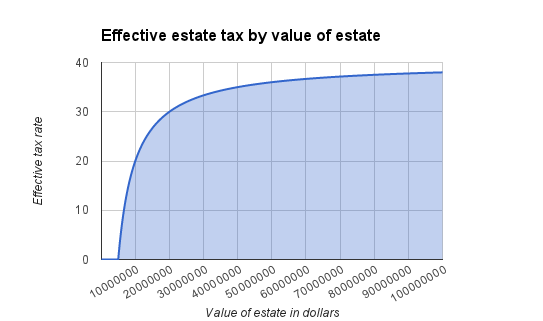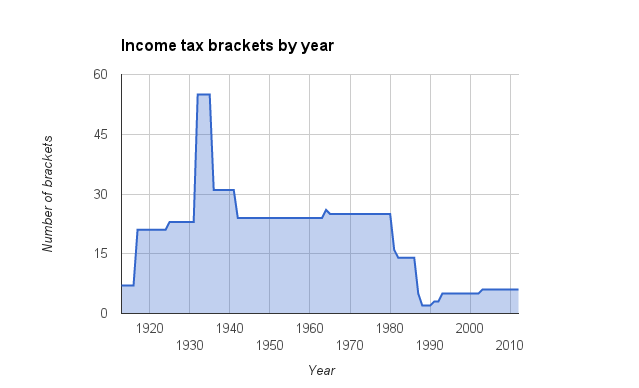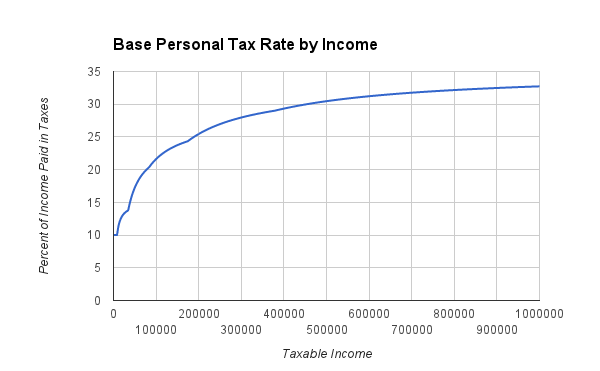For those of you paying attention to sports in any way whatsoever you may have noticed that the super bowl is coming up this weekend. It’s pretty easy to find a wide array of articles and analysis about it, and a week or two ago I came across an article at the bleacher report with the title:
Ranking Every Possible Super Bowl Matchup
(http://bleacherreport.com/articles/1483126-power-ranking-every-possible-super-bowl-matchup?hpt=hp_t3 )
I was excited by the title because I thought this was going to be a ranking of *EVERY* super bowl matchup between every team to figure out which team would actually be the strongest, and not just a simple rundown of what the situation was from this point onward.
Since that was a disappointment, I figured I’d just do it myself. Right?
Well, it’s easy enough (if not a touch tedious) to pull down the scores from every game of this season. Luckily, the NFL plays a relatively small number of games so it’s a fairly reasonable set of data. At most a team will play another team twice, so we can produce a somewhat odd 32×64 partially filled matrix containing all the win information in one direction and the loss information in the other direction.
The important thing that this allows us to do is to calculate some means and standard deviations. Specifically, we can check out the mean score of each team both from an offensive and defensive standpoint. The offensive score is the score that team was able to produce, and a higher score should indicate a better offense. The defensive score is the score that the team allowed the other team to produce, and a lower score should indicate a better defense.
Right off the start this gives us some good numbers to check out – what teams performed the best and worst throughout the season as well as how consistent given teams were.
The Patriots showed the best offense this year, coming in just over 34 points a game on average.
The worst team? Sorry, Kansas City Chiefs fans. Do I have any readers who are Kansas City Chiefs fans? Sorry, your offense only produced a little over 13 points on average.
The best defense goes to the Seattle Seahawks, only right around 15 and a quarter points per game allowed on average, and the worst defense goes to the New Orleans Saints, allowing on average just over 28 and a quarter points per game.
If we compare the average points of every team against every other team we can get a feel for what their records would have been if a) every team played every other team once and b) every team had the same defense. Obviously one of those is a bit larger of a jump, but let’s keep an open mind for the moment. This is how things would work out:
| Team (offense) | Count wins | Count losses |
| New England Patriots | 31 | 0 |
| Denver Broncos | 30 | 1 |
| New Orleans Saints | 29 | 2 |
| New York Giants | 28 | 3 |
| Washington Redskins | 27 | 4 |
| Green Bay Packers | 26 | 5 |
| Atlanta Falcons | 25 | 6 |
| Houston Texans | 24 | 7 |
| Seattle Seahawks | 23 | 8 |
| Cincinnati Bengals | 22 | 9 |
| Baltimore Ravens | 21 | 10 |
| San Francisco 49ers | 20 | 11 |
| Tampa Bay Buccaneers | 19 | 12 |
| Minnesota Vikings | 18 | 13 |
| Dallas Cowboys | 17 | 14 |
| Detroit Lions | 16 | 15 |
| Chicago Bears | 15 | 16 |
| Carolina Panthers | 13 | 17 |
| Indianapolis Colts | 13 | 17 |
| San Diego Chargers | 12 | 19 |
| Buffalo Bills | 11 | 20 |
| Pittsburgh Steelers | 10 | 21 |
| Tennessee Titans | 9 | 22 |
| Cleveland Browns | 8 | 23 |
| St. Louis Rams | 7 | 24 |
| Oakland Raiders | 6 | 25 |
| Miami Dolphins | 5 | 26 |
| New York Jets | 4 | 27 |
| Philadelphia Eagles | 3 | 28 |
| Jacksonville Jaguars | 2 | 29 |
| Arizona Cardinals | 1 | 30 |
| Kansas City Chiefs | 0 | 31 |
Due to the way this works out through mean comparisons, this is actually a ranking of how every team would do in a super bowl against every other team. The Patriots would beat anyone, the Broncos would beat everyone but the Patriots, etc.
We can find the probabilities (roughly) associated with this actually being the outcome by taking into account the stability of those means via their standard deviations. A proxy for this that I’m calling good enough for our immediate purposes is the probability associated with t-tests between these individual means. The product of these reversed probabilities (due to the fact that a win or loss is more probable when the p-value is small; e.g. .02 should actually be .98) gives us something we can put in a table. YES I KNOW I’M KIND OF BUTCHERING THE POINT OF P-VALUES.
Some of these numbers are actually reasonably finite, and we can add to the above table as such:
| Team (offense) | Count wins | Count losses | Probability of occurrence |
| New England Patriots | 31 | 0 | 0.47089515 |
| Denver Broncos | 30 | 1 | 0.019777304 |
| New Orleans Saints | 29 | 2 | 0.000572806 |
| New York Giants | 28 | 3 | 6.88355E-09 |
| Washington Redskins | 27 | 4 | 1.22143E-07 |
| Green Bay Packers | 26 | 5 | 2.99026E-08 |
| Atlanta Falcons | 25 | 6 | 7.57896E-08 |
| Houston Texans | 24 | 7 | 8.88084E-10 |
| Seattle Seahawks | 23 | 8 | 4.09893E-11 |
| Cincinnati Bengals | 22 | 9 | 1.49184E-09 |
| Baltimore Ravens | 21 | 10 | 5.36586E-12 |
| San Francisco 49ers | 20 | 11 | 1.34842E-11 |
| Tampa Bay Buccaneers | 19 | 12 | 1.50215E-10 |
| Minnesota Vikings | 18 | 13 | 1.74783E-09 |
| Dallas Cowboys | 17 | 14 | 4.93673E-10 |
| Detroit Lions | 16 | 15 | 7.0116E-10 |
| Chicago Bears | 15 | 16 | 4.6336E-12 |
| Carolina Panthers | 13 | 17 | 0 |
| Indianapolis Colts | 13 | 17 | 0 |
| San Diego Chargers | 12 | 19 | 3.8835E-10 |
| Buffalo Bills | 11 | 20 | 3.40025E-09 |
| Pittsburgh Steelers | 10 | 21 | 6.20755E-07 |
| Tennessee Titans | 9 | 22 | 1.45213E-08 |
| Cleveland Browns | 8 | 23 | 1.73087E-06 |
| St. Louis Rams | 7 | 24 | 1.08623E-06 |
| Oakland Raiders | 6 | 25 | 2.8135E-07 |
| Miami Dolphins | 5 | 26 | 1.65687E-07 |
| New York Jets | 4 | 27 | 2.73281E-08 |
| Philadelphia Eagles | 3 | 28 | 1.04094E-06 |
| Jacksonville Jaguars | 2 | 29 | 0.000267479 |
| Arizona Cardinals | 1 | 30 | 0.000383025 |
| Kansas City Chiefs | 0 | 31 | 0.137665451 |
You can see that things sort of follow an upside down bell curve (let’s call it a valley curve) – the most probable outcomes are those at the ends, while those in the middle have a bit more noise in them. More of those middle games are likely to be close enough to drop the cumulative associated probabilities.
What we should keep in mind is that there are a lot of potential outcomes here. There aren’t just 31 (31-0 down to 0-31), but every possible combination of individual wins/losses that would get you to that point. There’s only one way to get 31-0 or 0-31, but there are 31 ways to go 30-1 or 1-30 (you could win or lose to any given team, and each of those has a probability associated with it). If you’d like to kill a bit more time before you get back to work you can start working out the number of ways you can get to each potential outcome. It also explains at least a little bit of the valley curve that we have going.
Yes, the clever among you might have just realized that this table is excluding some potentially important information. This probability isn’t the cumulative probability of all situations that would produce a given outcome, but rather the probability associated with the most likely sequence that would produce that outcome.
For example, the Broncos going 30-1 is actually the probability of the Broncos going 30-1 while losing to the Patriots. There’s another probability that they’d go 30-1 while losing to the Giants, or the Saints, or even the Chiefs (the probability of them just losing to the Chiefs *at all* in this metric is 4.57E-07; fairly unlikely).
There’s also a strange coincidence here that you might notice – the Panthers and Colts actually produced the same mean score throughout the season. There’s an interesting discussion to be had about how the way points are earned (in chunks) allows this, but it’s for another day. We’ll see it happen a few more times when we get to defense.
Overall these probabilities don’t really instill a lot of confidence (except for the Chiefs – sorry again Chiefs fans). We have to keep in mind that this is simply offense, and doesn’t consider how difficult any teams’ defense might have been. Now that we’ve seen how this works we can also produce the same table based on the idea that a) every team plays every other team once and b) every team has the same offense.
Such a situation would mean that a team’s defense was the only way to stand out, and we can produce the same table based on how things would play out from there:
| Team (defense) | Count wins | Count losses | Probability of Occurrence |
| Seattle Seahawks | 31 | 0 | 0.033645703 |
| San Francisco 49ers | 30 | 1 | 5.72087E-06 |
| Chicago Bears | 29 | 2 | 3.03016E-05 |
| Atlanta Falcons | 28 | 3 | 7.53205E-07 |
| Houston Texans | 27 | 4 | 0 |
| Miami Dolphins | 26 | 5 | 5.97182E-10 |
| Denver Broncos | 25 | 6 | 4.65242E-06 |
| Cincinnati Bengals | 24 | 7 | 1.68938E-11 |
| Pittsburgh Steelers | 23 | 8 | 5.27437E-11 |
| New England Patriots | 22 | 9 | 0 |
| Green Bay Packers | 21 | 10 | 3.75177E-13 |
| St. Louis Rams | 20 | 11 | 1.21268E-13 |
| Baltimore Ravens | 19 | 12 | 0 |
| Arizona Cardinals | 18 | 13 | 5.77952E-13 |
| Minnesota Vikings | 17 | 14 | 1.17577E-13 |
| Cleveland Browns | 16 | 15 | 5.5051E-11 |
| Carolina Panthers | 15 | 16 | 2.73832E-11 |
| San Diego Chargers | 14 | 17 | 1.6091E-12 |
| New York Giants | 13 | 18 | 0 |
| New York Jets | 12 | 19 | 1.07632E-10 |
| Indianapolis Colts | 11 | 20 | 9.97422E-12 |
| Washington Redskins | 10 | 21 | 2.72878E-09 |
| Tampa Bay Buccaneers | 9 | 22 | 6.3485E-09 |
| Dallas Cowboys | 8 | 23 | 3.63465E-07 |
| Kansas City Chiefs | 7 | 24 | 9.21125E-08 |
| Buffalo Bills | 6 | 25 | 7.97968E-11 |
| Tennessee Titans | 5 | 26 | 2.93401E-05 |
| Philadelphia Eagles | 4 | 27 | 0 |
| Jacksonville Jaguars | 3 | 28 | 0 |
| Detroit Lions | 2 | 29 | 8.82456E-09 |
| Oakland Raiders | 1 | 30 | 5.65719E-11 |
| New Orleans Saints | 0 | 31 | 1.93842E-07 |
The same things about the other charts apply to this one, though it also gives us a picture of how strong different teams’ defense was. Unfortunately, this is also confounded with the fact that different defenses played different offenses. We could simply look back at offenses, but those were already confounded by the fact that different offenses played different defenses. You can see we’re in a bit of a loop here.
While we’re trying to think our way out of that one we can kill some time by taking a look at the average quality of defense that different teams faced throughout the season. We can do this by averaging – for each team – the average points allowed by their specific list of opponents. The more points that your list of opponents allowed, the easier it is to score points against them.
| Team | Opponent Defense |
| Atlanta Falcons | 24.5025641 |
| Pittsburgh Steelers | 23.89198718 |
| Cleveland Browns | 23.5650641 |
| Tampa Bay Buccaneers | 23.50737179 |
| Cincinnati Bengals | 23.5025641 |
| Indianapolis Colts | 23.46634615 |
| San Diego Chargers | 23.40865385 |
| Philadelphia Eagles | 23.07948718 |
| Jacksonville Jaguars | 23.04807692 |
| Houston Texans | 22.96634615 |
| Kansas City Chiefs | 22.93269231 |
| Baltimore Ravens | 22.91121795 |
| Carolina Panthers | 22.88717949 |
| Miami Dolphins | 22.88461538 |
| New Orleans Saints | 22.86794872 |
| Denver Broncos | 22.81730769 |
| Washington Redskins | 22.81025641 |
| Chicago Bears | 22.76217949 |
| New York Giants | 22.67083333 |
| Green Bay Packers | 22.60576923 |
| Oakland Raiders | 22.55288462 |
| Minnesota Vikings | 22.53846154 |
| Tennessee Titans | 22.49038462 |
| Buffalo Bills | 22.46153846 |
| New England Patriots | 22.19230769 |
| New York Jets | 22.17788462 |
| Seattle Seahawks | 22.07467949 |
| San Francisco 49ers | 22.06730769 |
| Dallas Cowboys | 21.94230769 |
| Detroit Lions | 21.85576923 |
| St. Louis Rams | 21.62980769 |
| Arizona Cardinals | 21.39903846 |
Turns out things are actually pretty close when it gets to this level. The Falcons faced the easiest defenses, with their average opponent allowing 24 and a half points. The Cardinals – perhaps not enough to account for their fairly weak season – faced the most difficult defenses.
We can look at the same concept in terms of how well defenses performed against their opponents’ offenses:
| Team | Opponent Offense |
| Arizona Cardinals | 23.18269231 |
| Atlanta Falcons | 22.5599359 |
| Baltimore Ravens | 23.43974359 |
| Buffalo Bills | 20.9375 |
| Carolina Panthers | 23.58397436 |
| Chicago Bears | 22.27403846 |
| Cincinnati Bengals | 21.35801282 |
| Cleveland Browns | 22.59358974 |
| Dallas Cowboys | 23.9974359 |
| Denver Broncos | 23.49519231 |
| Detroit Lions | 22.05769231 |
| Green Bay Packers | 22.73301282 |
| Houston Texans | 23.25 |
| Indianapolis Colts | 21.77403846 |
| Jacksonville Jaguars | 23.12019231 |
| Kansas City Chiefs | 23.48557692 |
| Miami Dolphins | 22.0625 |
| Minnesota Vikings | 22.62980769 |
| New England Patriots | 21.67307692 |
| New Orleans Saints | 23.35801282 |
| New York Giants | 23.96634615 |
| New York Jets | 22.07211538 |
| Oakland Raiders | 22.34615385 |
| Philadelphia Eagles | 23.73301282 |
| Pittsburgh Steelers | 21.9974359 |
| San Diego Chargers | 22.38461538 |
| San Francisco 49ers | 23.44455128 |
| Seattle Seahawks | 22.56730769 |
| St. Louis Rams | 23.55288462 |
| Tampa Bay Buccaneers | 22.97339744 |
| Tennessee Titans | 22.73557692 |
| Washington Redskins | 23.25224359 |
At this level of aggregation we again seem to be washing out all useful variance.
Overall, I’m not sure there’s really enough variance here to warrant the meaningful inclusion of it unless things are really pretty close.
Speaking of close, we should at some point probably try to figure out who is going to win the *actual* super bowl. One last combination before we get to that. We might be able to get a little more out of offense and defense if we look at them in combination. We can do this by combining the win/loss records for each team to produce a table like this:
| Team (overall) | Wins overall | Losses overall |
| Denver Broncos | 55 | 7 |
| Seattle Seahawks | 54 | 8 |
| Atlanta Falcons | 53 | 9 |
| New England Patriots | 53 | 9 |
| Houston Texans | 51 | 11 |
| San Francisco 49ers | 50 | 12 |
| Green Bay Packers | 47 | 15 |
| Cincinnati Bengals | 46 | 16 |
| Chicago Bears | 44 | 18 |
| New York Giants | 41 | 21 |
| Baltimore Ravens | 40 | 22 |
| Washington Redskins | 37 | 25 |
| Minnesota Vikings | 35 | 27 |
| Pittsburgh Steelers | 33 | 29 |
| Miami Dolphins | 31 | 31 |
| New Orleans Saints | 29 | 33 |
| Carolina Panthers | 28 | 33 |
| Tampa Bay Buccaneers | 28 | 34 |
| St. Louis Rams | 27 | 35 |
| San Diego Chargers | 26 | 36 |
| Dallas Cowboys | 25 | 37 |
| Cleveland Browns | 24 | 38 |
| Indianapolis Colts | 24 | 37 |
| Arizona Cardinals | 19 | 43 |
| Detroit Lions | 18 | 44 |
| Buffalo Bills | 17 | 45 |
| New York Jets | 16 | 46 |
| Tennessee Titans | 14 | 48 |
| Kansas City Chiefs | 7 | 55 |
| Oakland Raiders | 7 | 55 |
| Philadelphia Eagles | 7 | 55 |
| Jacksonville Jaguars | 5 | 57 |
Looks like that helps to put a bit more spread on things, though our apparent best teams aren’t the ones in the super bowl. Not shocking, as randomness can really play havoc with things when you play so few games and leave playoffs and finals up to single elimination matches. While I’d be a bit more excited to watch a super bowl between the Broncos and the Seahawks (or the Bears and the Jaguars), that’s not what we have this year.
The Ravens and 49ers – going back to the earlier table – put up the 11th and 12th best offenses on average. They’re actually pretty close on that metric – the Ravens averaged 24.875 points per game, while the 49ers averaged 24.8125 points per game. Given that their pooled standard deviation on those means is 11.70 points there’s very little reason to believe that one of these teams has a substantially (or statistically) better offense.
The 49ers scored less than a tenth of a point less than the Ravens on average, though they also faced slightly more difficult opponents. Their opponents allowed 22.0673 points on average, while the Ravens’ opponents allowed 22.9112 points on average. While this might allow us to tip things *a little* more in favor of the 49ers I’d still be hesitant to say that anything was even close to a sure thing. I’ve thought about it a while and don’t know if I have any meaningful way to combine points earned and points allowed by specific opponents.
Let’s take a look at defenses – the 49ers did hold up to some of the early promise of a good defense by coming up as the 2nd best, allowing only right around 17 points on average. The Ravens were somewhat in the middle of the pack, coming up as 13th best defense with right around 21 and a half points on average.
Remember where we got caught in a loop a while ago? One of the problems was that we had offense and defense to worry about, though at least for this pairing it seems the offenses are pretty close. The small point difference is also offset by the difference in opponents.
If defense is where the difference is it’s hardly enough to be impressed by – the difference in defensive strength is 4 points, while the pooled standard deviation is just under 11 points.
The slight advantage held by the 49ers is also shown in that last table, as they show up as 6th overall while the Ravens come in at 11th. Even this spread isn’t huge, as it’s partly due to the fact that a lot of teams are actually incredibly close in terms of mean points scored or allowed. Forcing things into wins/losses allows for sorting, but carries a lot of error in these close match-ups that could have gone either way. Let us keep in mind that the teams that are coming up on the top of our charts didn’t have perfect seasons, but the games they lost they may have lost by very slim margins.
All in all I was hoping that one of these teams would have meaningfully distinguished themselves on something, but it seems that these two teams in the super bowl really are pretty close – at least by the numbers. If pushed it would seem that the 49ers have a slight edge, but what that relates to in terms of a point spread is pretty tricky. If the 49ers are able to put up a defense that’s able to stop 4.5 more points than the Ravens, and both play basically the same offense (with perhaps a slight advantage to the 49ers), then we’re talking about less than a one possession spread. Four to five points is right in that range of being just covered by a touchdown but not covered by a field goal.
If I had to make some guesses, then, the best things to work from are the scores we’ve seen so far – offensively 24.8125 vs 24.875 points per game, defensively 17.0625 vs 21.5 (49ers and Ravens, respectively). Opponents of each team also gave up 22.0673 vs 22.9112 points on average, scored 23.4446 vs 23.4397 on average.
So, if team A is trying to score x points and team B is trying to hold team A to y points, the relative importance of offense vs defense would dictate the weighted average that is most accurate. Given no reason to assume anything else I’m just going to call it an even split and take a normal average. What that would mean is that the most likely score of this super bowl (still probably pretty unlikely) would be 23.15625 to 20.96875, 49ers. Okay, so that score is not just unlikely, but impossible. Silly imprecise sports.
You might be going straight to the comments to point out that you can’t earn 0.00005 points in a game of *normal* football. More important is the fact that even the rounded score of 23-21 might not be the most common. If we head back over to my favorite historical archive of all football scores ever ( http://www.pro-football-reference.com/boxscores/game_scores.cgi ) we can see that there have only ever been 46 games with an outcome of 23-21. Given the amount of error we’re playing with here I’m willing to take this prior information into account to some degree, especially given the fact that the *very* similar score of 23-20 is over three times as likely as 23-21.
In all, my best guess would be that the scores are pretty close, and somewhere in the low 20s both. The 49ers seem to have a slight edge, but it’s football and they only get to play one game. Repeat this super bowl 100 times and then we can talk.
More than anything, it seems that this super bowl might actually be a close game. I say that’s always what I want, sooooooo I guess I’d better watch it.
Maybe I’ll record it so I can get rid of the stupid commercials. (<- flame baiting)
>>>>Update:
Here are the raw numbers for points scored and points allowed as requested in the comments.
| Team | Points scored | Points allowed |
| Arizona Cardinals | 15.625 | 22.3125 |
| Atlanta Falcons | 26.1875 | 18.6875 |
| Baltimore Ravens | 24.875 | 21.5 |
| Buffalo Bills | 21.5 | 27.1875 |
| Carolina Panthers | 22.3125 | 22.6875 |
| Chicago Bears | 22.5625 | 17.3125 |
| Cincinnati Bengals | 25.0625 | 20 |
| Cleveland Browns | 18.875 | 23 |
| Dallas Cowboys | 23.5 | 25.53333333 |
| Denver Broncos | 30.0625 | 18.0625 |
| Detroit Lions | 23.25 | 27.3125 |
| Green Bay Packers | 27.0625 | 21 |
| Houston Texans | 26 | 20.6875 |
| Indianapolis Colts | 22.3125 | 24.1875 |
| Jacksonville Jaguars | 15.9375 | 27.75 |
| Kansas City Chiefs | 13.1875 | 26.5625 |
| Miami Dolphins | 18 | 19.8125 |
| Minnesota Vikings | 23.6875 | 20.875 |
| New England Patriots | 34.8125 | 20.6875 |
| New Orleans Saints | 28.8125 | 28.375 |
| New York Giants | 27.46666667 | 21.5 |
| New York Jets | 17.5625 | 23.4375 |
| Oakland Raiders | 18.125 | 27.6875 |
| Philadelphia Eagles | 17.5 | 27.75 |
| Pittsburgh Steelers | 21 | 20.25 |
| San Diego Chargers | 21.875 | 21.875 |
| San Francisco 49ers | 24.8125 | 17.0625 |
| Seattle Seahawks | 25.75 | 15.3125 |
| St. Louis Rams | 18.6875 | 21.75 |
| Tampa Bay Buccaneers | 24.3125 | 24.625 |
| Tennessee Titans | 20.625 | 29.4375 |
| Washington Redskins | 27.25 | 24.25 |









